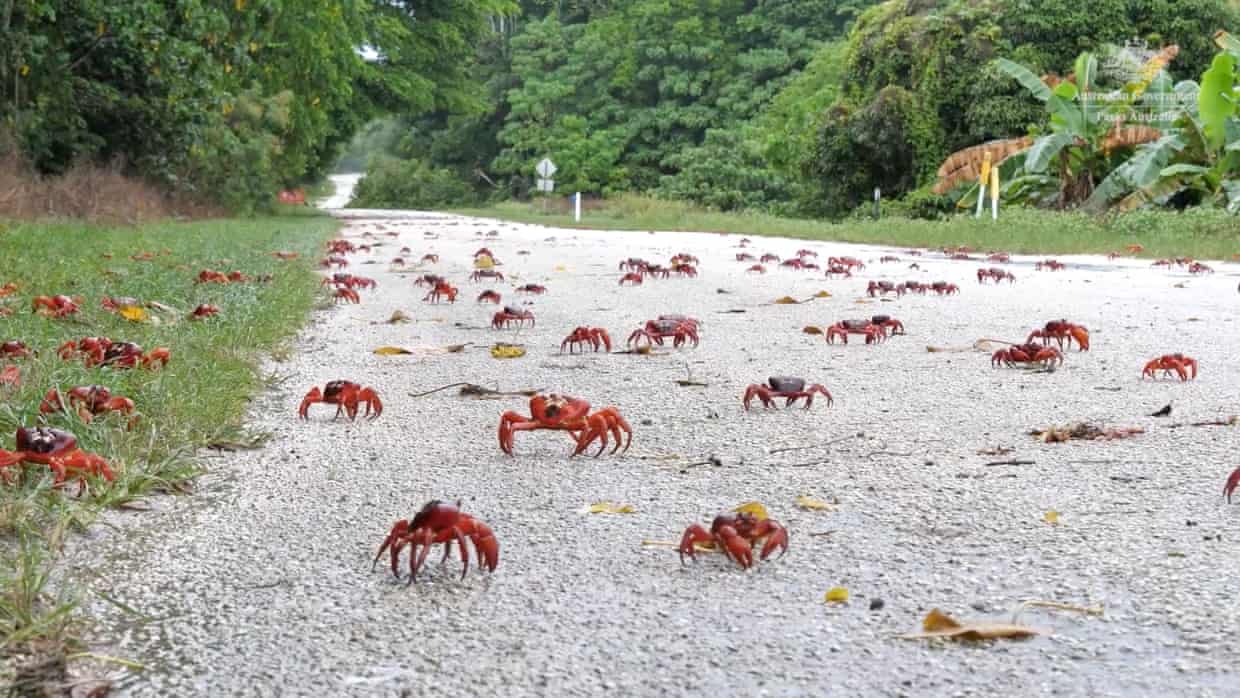Temporary roadside barriers set up to channel tens of millions of crabs migrating to the coastline
Australian Associated Press
The welcome mat has been rolled out for scores of red crabs as they make their annual coastal dash on Christmas Island.
Each year, the first substantial rain of the wet season triggers tens of millions of adult red crabs to leave their forest homes, in the interior of the island, and march towards the coast to mate and spawn.
Christmas Island is 1,500km from the Australian mainland and lies 350km south of the Indonesian island of Java.
Staff at the Christmas Island national park have spent months preparing for the mass migration, setting up kilometres of temporary roadside barriers to channel the migrating crabs to the safety of underpasses and overpasses.
They also divert traffic away from the crabs as they scurry to the coast.
The park manager, Derek Ball, said the red crab was the island’s keystone species and the entire community pitches in to facilitate the “fascinating phenomenon”.
“Over many years we’ve also targeted the red crab’s biggest threat, the invasive yellow crazy ant,” he said in a statement on Sunday.
“By reducing their numbers, the red crab population numbers are higher than we’ve seen in decades which is an outstanding result not only for the red crabs, but for the entire island ecosystem.”
Crazy ants were first detected on the island in the 1920s, but it wasn’t until the first super colonies formed in the late 1980s that they became a problem.
The ants have killed tens of millions of red crabs over the years by spraying them with potent formic acid.
But there are fewer of the invaders now after scientists deployed a micro-wasp to prey on an insect that historically provided the ants with an abundant food source.
The red crab is found on Christmas Island and, to a much lesser extent, the nearby Cocos Islands.
Its population has more than doubled in the past five years, from 50 million to more than 100 million.
“This iconic natural phenomenon is not just incredible to see, but a fantastic success story of how we can work together to better protect our precious native species,” the federal environment minister, Tanya Plibersek, said on Sunday.
